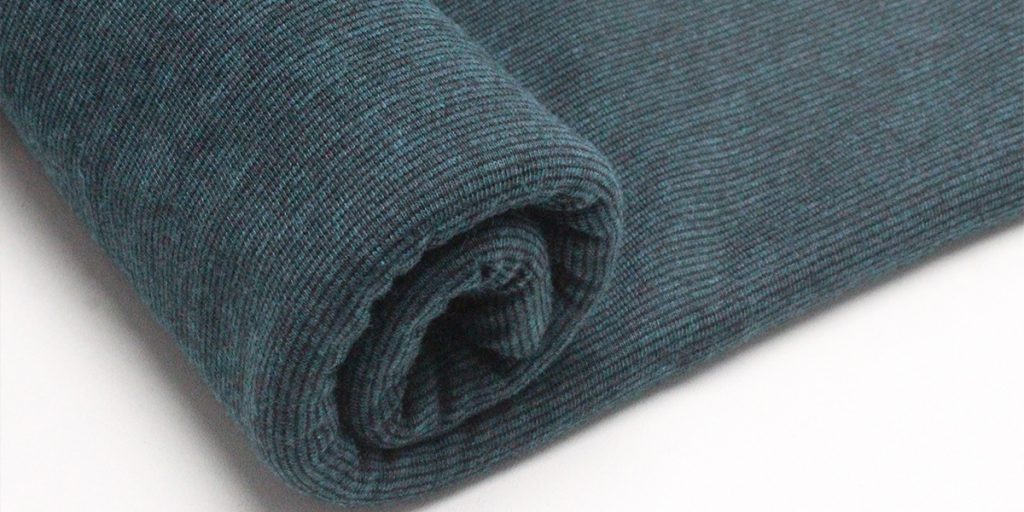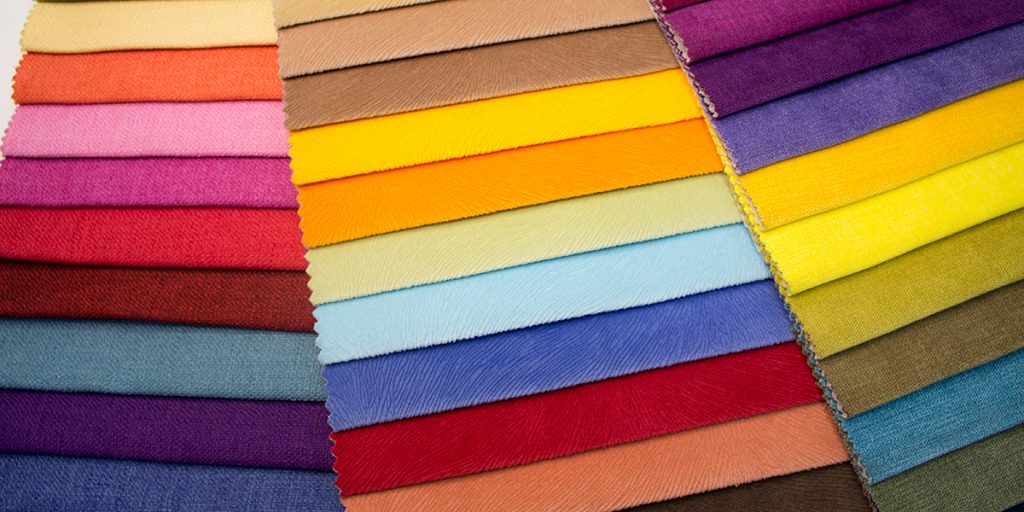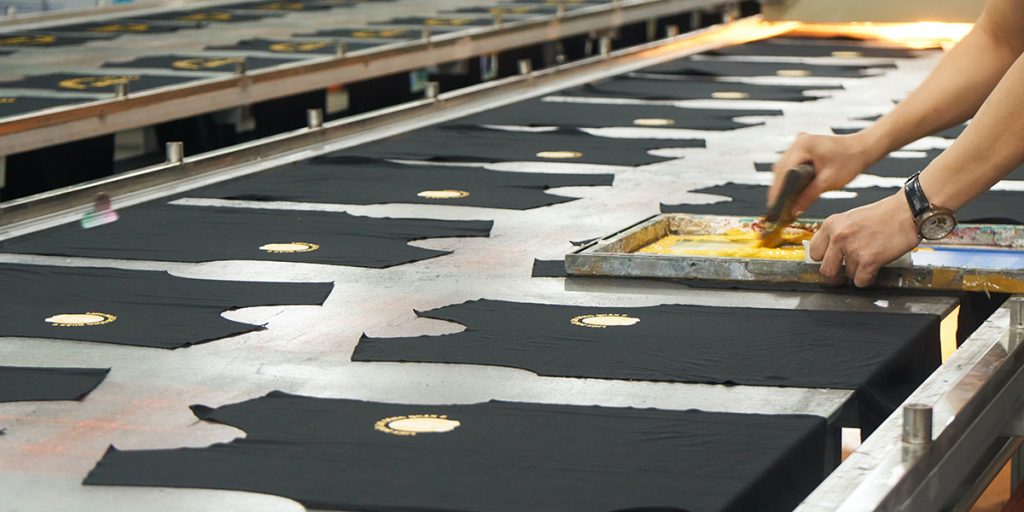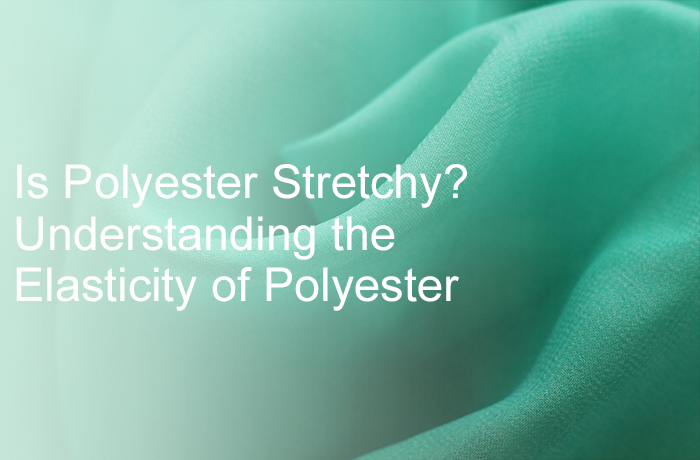What is polyester?
Polyester is a synthetic fabric made from petroleum-based fibers. It was created in the 1940s and quickly gained popularity due to its durability, wrinkle resistance, and low cost. Polyester is also commonly used in clothing, but it is also used in other products such as rugs, bedding, and upholstery due to its properties. At the same time, it is also resistant to shrinkage and fading. This is also a favorite fabric for providers of print-on-demand products. Its printing effect is the best in most fabrics.
Is polyester stretchy?
100% polyester fabric is non-elastic. Therefore, clothes made of polyester fabrics generally have a smooth surface. Because polyester is not known for its elasticity. More fabric manufacturers are making polyester fabric stretchy by blending it with other fibers, such as polyester blends, which we will discuss later. This blend is often used in activewear and other garments that require flexibility and freedom of movement.

Polyester Blend
100% polyester fabric is non-elastic. Therefore, clothes made of polyester fabrics generally have a smooth surface. Because polyester is not known for its elasticity. More fabric manufacturers are making polyester fabric stretchy by blending it with other fibers, such as polyester blends, which we will discuss later. This blend is often used in activewear and other garments that require flexibility and freedom of movement.
Polyester blends are classified into numerous categories, including polyester cotton blends, polyester and spandex blends, and 3 in 1 blend (cotton, polyester and rayon).
What makes polyester stretchy or non-stretchy?
Polyester can be made stretchy or non-stretchy depending on its composition, construction, and treatment. Here are the key factors that affect the elasticity of polyester fabric:
Composition
Polyester’s composition influences its elasticity since it dictates the molecular structure of the fibers. Polyesters can be manufactured from a variety of monomers, which are polymer building blocks. Some monomers, such as glycol-modified PET (PETG), are more elastic than others, resulting in a more elastic polyester fabric. Some materials, such polybutylene terephthalate (PBT), are less elastic and produce a stiffer fabric.

Construction
The elasticity of polyester fabric is also affected by its manufacture. Polyester fabrics are either woven or knitted, and the weave or knit pattern determines how well the fabric expands. Plain weave materials, for example, have no elasticity, but rib knit fabrics have more flexibility. The elasticity of the fabric is also affected by the thickness and density of the yarns employed in its manufacturing.
Treatment
The flexibility of polyester fabric can also be affected by its treatment. Some treatments, such as Heatsetting, can increase a fabric’s elasticity, whilst others, such as shrink-resistant finishing, can decrease it. The way a fabric is produced and finished influences its texture, drape, and feel, which in turn influences its elasticity.
How to identify stretchy and non-stretch polyester fabrics?
Polyester can be made stretchy or non-stretchy depending on its composition, construction, and treatment. Here are the key factors that affect the elasticity of polyester fabric:
Examine the label
The fiber content and care recommendations for most polyester fabrics are listed on the label. Look for textiles that have a polyester/spandex/elastane combination. These textiles have the potential to be stretchable.
Do a stretch test
If the label does not provide enough information, you can perform a simple stretch test to establish the elasticity of the fabric. Gently stretch the fabric while holding the ends. It is likely elastic if it stretches readily and returns to its former shape. It’s most likely inelastic if it doesn’t stretch or feels rigid.
Consider weaving or knitting
As previously stated, weaving or knitting patterns might provide information on the flexibility of the cloth. Rib knits, double jersey, and jersey are more stretchy, whilst plain and twill are less so.
Which fabric is better to print on: polyester or natural ones?
Whether to print on polyester or natural fabrics is determined by the project’s individual needs and preferences. Polyester is an excellent material for performance clothing and designs that demand brilliant, long-lasting color. Natural materials are ideal for soft, pleasant wear and designs that demand a more natural and organic appearance.

Polyester is a popular material for sportswear, outdoor clothing, and other high-performance clothing. Polyester printing processes include dye sublimation printing, screen printing, and direct-to-garment printing. Dye-sublimation printing is particularly popular on polyester because it creates brilliant colors and precise details that are long-lasting and resistant to fading, and it is the principal printing technology used by the majority of apparel producers.Cotton, silk, and linen are natural materials noted for their softness, breathability, and comfort (Are Cotton T-shirts Appropriate for All-over-Print). This is frequently the primary choice for casual apparel, home decor, and other applications requiring a more relaxed and organic appearance. Natural fabrics can be printed using a variety of techniques such as screen printing, woodblock printing, and digital printing. However, the results may not be as brilliant or long-lasting as those produced by polyester, particularly if printed using water-based inks.
Will washing cause the polyester fabric to expand or shrink?
When wet or washed, 100% polyester fabric will not stretch or shrink. Although polyester does not shrink easily, it will shrink when exposed to high temperatures. Because there isn’t much of a distinction between 100% polyester and plastic. Imagine the qualities of plastic and you’ll get the picture.
 Additionally, if enough force is applied to the polyester fabric, it can expand but may not return to its former shape. This is because polyester, unlike certain other materials, is not naturally stretchable.
Additionally, if enough force is applied to the polyester fabric, it can expand but may not return to its former shape. This is because polyester, unlike certain other materials, is not naturally stretchable.
Related article: Does Polyester Shrink?
Conclusion
Polyester is a popular apparel fabric known for its durability and easy care. While polyester isn’t generally known for being stretchy, it can be made stretchy by blending it with other fibers like spandex or elastane.
Don’t forget that JetPrint is an excellent alternative for high-quality print on demand clothing fabrics. JetPrint provides a diverse choice of fabric and printing possibilities, making it simple to create personalized garment designs that are both fashionable and functional.
Related article: Is Polyester Breathable?


0 Comments